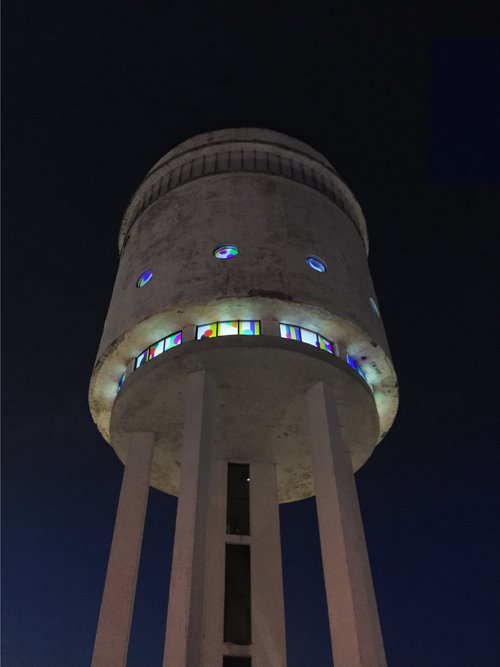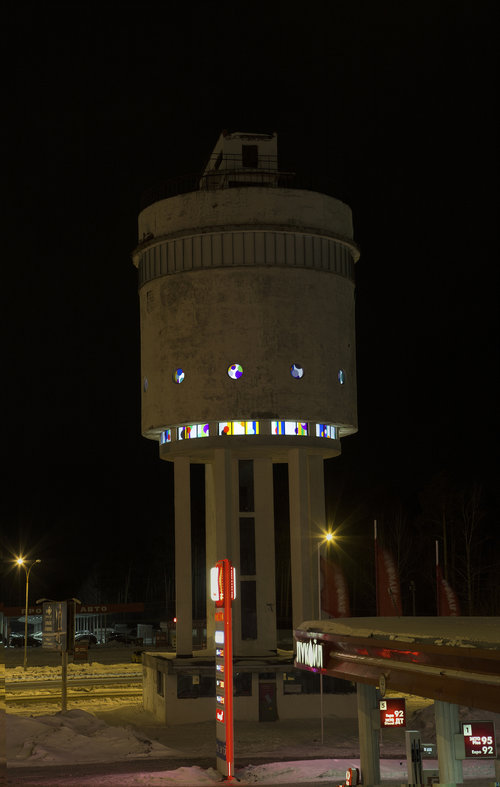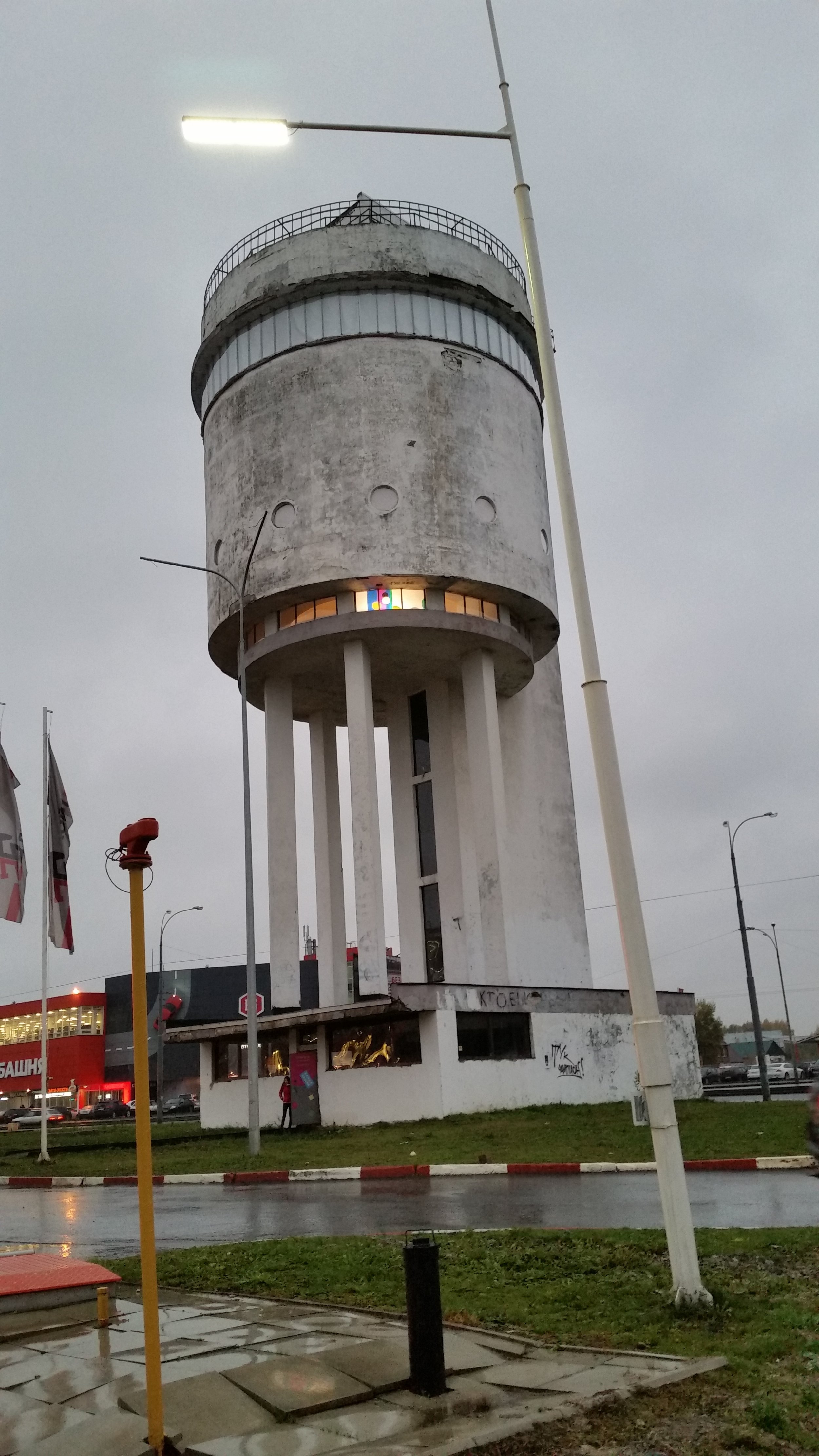WATER BUBBLES
In 2016 I received a commission from the non-profit Cultural Transit for a light installation in twenty windows of the White Tower in Yekaterinburg, Russia. The tower, a 98’-high Constructivist landmark designed by Moisei Reischer, had been abandoned in the 1960s, when the lake that was its water source ran dry. A group of local architects that were trying to restore it worked with Cultural Transit to get my light installation in its lower windows.
“Water Bubbles,” whose title referred to the tower’s original use, used light and transparency to respond to the unique configuration of the tower windows. It gave a sense of delight to casual passersby, due to its imagery, colors, and shapes. Its additional layers of art-historical significance added dimensions to more knowledgeable art enthusiasts. Its design of circles and rectangles united the windows’ shapes to form a whole, using the vocabulary of Constructivist painting. The movement’s paintings thus merged with its architecture, while the newer medium of light and technology joined the older one of painting to celebrate Russia’s rich cultural heritage.
Constructivism took place in the early twentieth century in Russia, and has been called the precursor to the Bauhaus movement and modernism. The movement took place in painting and sculpture as well as architecture. Stalin in his early years was enthusiastic about it, since a wholly new form of architecture and art symbolized the wholly new form of government, Communism. The White Tower was the largest water tank in the world when it was completed in 1931. It was built to supply water for Uralmash, one of the first planned developments Stalin undertook to industrialize Russia.
Rectangular windows: 30” x 93”; Round windows 34” in diameter
While Water Bubbles is being installed:






















